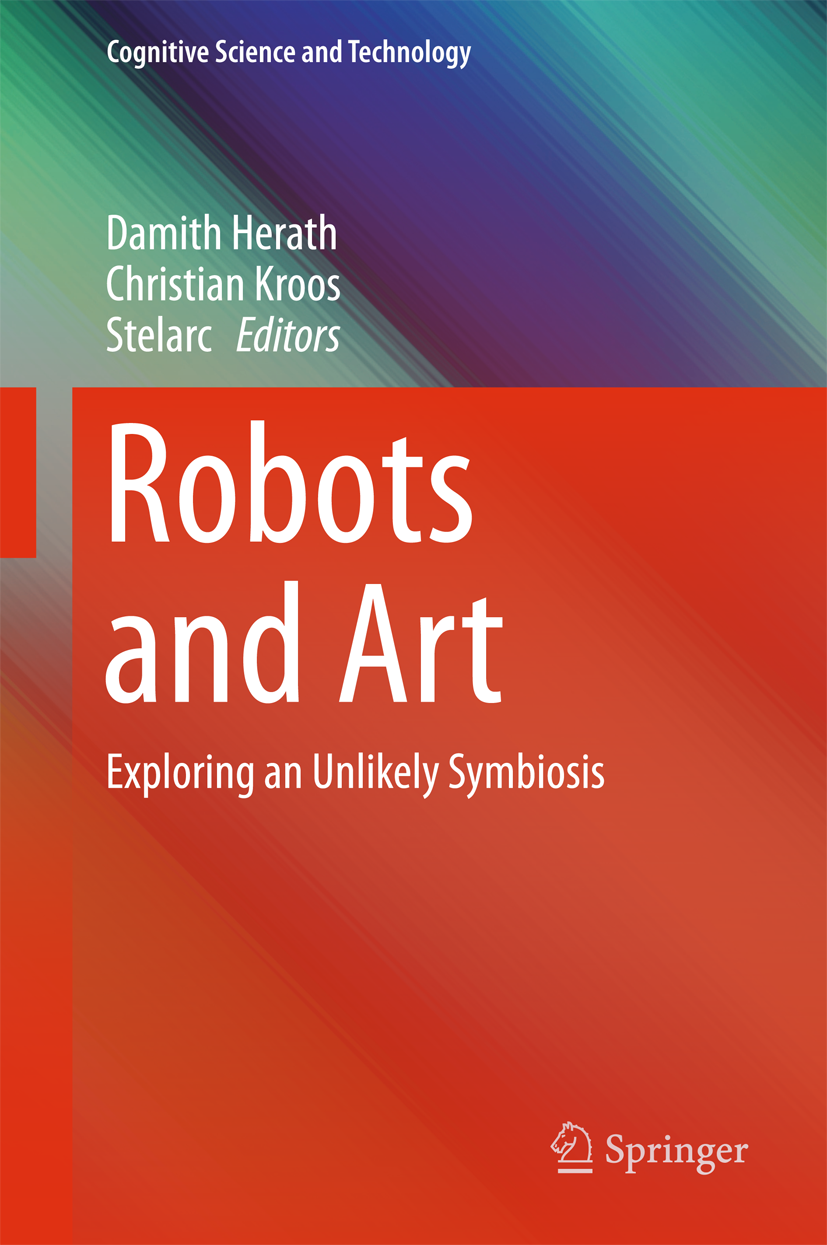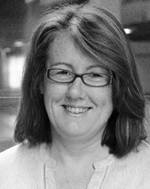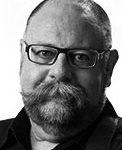eBook ISBN: 978-981-10-0321-9
DOI: 10.1007/978-981-10-0321-9
Number of Pages: XIX, 456
Number of Illustrations: 18 b/w, 200 colour
Robots and Art – The Book
The first compendium on robotic art of its kind, this book explores the integration of robots into human society and our attitudes, fears and hopes in a world shared with autonomous machines. It raises questions about the benefits, risks and ethics of the transformative changes to society that are the consequence of robots taking on new roles alongside humans. It takes the reader on a journey into the world of the strange, the beautiful, the uncanny and the daring – and into the minds and works of some of the world’s most prolific creators of robotic art.
 Damith Herath
Damith Herath
received his PhD in Robotics from the University of Technology, Sydney in 2008 while at the ARC Centre of Excellence for Autonomous Systems (CAS) and has a BSc (Hons) in Production Engineering, University of Peradeniya, Sri Lanka in 2001. He held a doctoral fellowship at CAS prior to joining MARCS Institute on the Thinking Head Project as the Research Engineer. At MARCS he led several robotic projects that explore various nuances of Human-Robot Interaction including reciprocal influences between the arts and robotics. His interests include autonomous robot navigation, localization and mapping, human-robot interaction and robotic art. Over the last four years he has contributed to a number of robotic art projects as the lead roboticist. He is also the convener and program co-chair of the 2011 International Conference on Robotics and Automation – Workshop on Robots and Art.
 Christian Kroos
Christian Kroos
received his M.A. and Ph.D. in Phonetics and Theatre Studies from the Ludwigs-Maximilians-Universität, München, Germany. His work on speech articulator movements and face motion during spoken language led to interdisciplinary research covering computer vision, cognitive sciences and robotics conducted internationally at the Institute of Phonetics and Speech Processing at Ludwigs-Maximilians-Universität (Germany), at ATR International (Japan) and at Haskins Laboratories (USA). At MARCS Institute, University of Western Sydney, Australia, he explored non-verbal human-machine interaction in the Thinking Head project. Besides his interest in robotic agents, he is still fascinated by human speech production and the evolution of language.
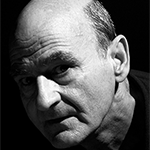 Stelarc
Stelarc
explores alternate anatomical architectures. He is an artist whose projects incorporate prosthetics, robotics, biotechnology, medical imaging and the internet. He has performed with a Third Hand, a Stomach Sculpture, Exoskeleton and a Prosthetic Head. Fractal Flesh, Ping Body and Parasite are internet performances that explore remote and involuntary choreography. He is surgically constructing and stem-cell growing an ear on his arm that will be internet enabled. In 1996 he was made an Honorary Professor of Art and Robotics at Carnegie Mellon University, Pittsburgh and in 2002 was awarded an Honorary Doctorate of Laws by Monash University, Melbourne. In 2010 was awarded the Ars Electronica Hybrid Arts Prize. In 2014 he initiated the Alternate Anatomies Lab. In 2015 he received the Australia Council’s Emerging and Experimental Arts Award. Stelarc is currently a Distinguished Research Fellow, School of Design and Art (SODA) at Curtin University. His artwork is represented by the Scott Livesey Galleries, Melbourne.
Prologue
1) Engineering the Arts (Herath & Kroos) | [expand title=”abstract” trigclass=”noarrow”]This book is a result of chance encounters, random discussions and a colluding collaboration between an engineer, a scientist and an artist. From the onset, the interdisciplinary nature has set us on a colliding course of ideas, expectations and interests. While interdisciplinary research is celebrated en masse by funding agencies, government bodies and the academia, researchers who embrace interdisciplinarity live a distinctly strenuous life with little recognition for their efforts that appear to fall into the chasm between the established norms and practices of the constituent disciplines. Here, we anecdotally backtrack our journey through the years, homage to the individuals who assume flexible identities seeking out adventures beyond the confinements of one’s chosen field. Here’s to the engineers.[/expand]
2) The Art in the Machine (Kroos)| [expand title=”abstract” trigclass=”noarrow”]Here the major themes that arise in the nineteen chapters of this book are introduced and discussed within the framework of how robotic art relates to the general public and how it interconnects with science and engineering.
[/expand]
Then and Now
3) We Have Always Been Robots: The History of Robots and Art (Stephens & Heffernan) | [expand title=”abstract” trigclass=”noarrow”]Although the “robot” is a twentieth century concept, machines that conform to the same definition—are capable of carrying out complex actions automatically—are part of a much longer history. This chapter will provide an overview of this history. It will trace the contemporary emergence of the robot back to the appearance of clockwork and mechanical automata in the early modern period.
In so doing, the chapter will make two key contributions to this book’s study of robots and art. Firstly, it will argue that the concept of a robot predates the emergence of the word robot by several centuries, and that our understanding of the contemporary concept is enriched by recognition of this longer history. Secondly, it will show that, from its very inception, the history of robots has been closely entwined with that of art—evident not least in the fact the term itself derives from the context of theatre. This history continues to be reflexively present in contemporary performance.
[/expand]
4) Robotics and Art, Computationalism and Embodiment (Penny) | [expand title=”abstract” trigclass=”noarrow”]Robotic Art and related practices provide a context in which real-time computational technologies and techniques are deployed for cultural purposes. This practice brings the embodied experientiality, so central to art hard up against the tacit commitment to abstract disembodiment inherent in the computational technologies. In this essay I explore the relevance of post-cognitivist thought to robotics in general, and in particular, questions of materiality and embodiment with respect to robotic art practice – addressing philosophical, aesthetic-theoretical and technical issues.
[/expand]
5) Robotics: Hephaestus does it again (Laumond) | [expand title=”abstract” trigclass=”noarrow”]Robotics research is introduced by taking inspiration of an ancient myth accounting for the universally debated relationship between science and technology. In Greek mythology, Hephaestus was a talented craftsman. Enamoured with Athena, he attempted to seduce her, in vain. The goddess of “knowing” withstood the advances of the god of “doing”. The myth contradicts a current tendency to confuse science and technology. It nevertheless reflects the experience of the author as a roboticist.
[/expand]
Epilogue
21) Encounters, Anecdotes and Insights in Prosthetics, Robotics and Art (Stelarc)| [expand title=”abstract” trigclass=”noarrow”]Performing with prosthetic attachments and robotic extensions, the artist’s body becomes an operational system that combines improvised actions with involuntary and automated motions. The body interfaced and interacting with machines, experiences its own movements as machinic. Using anecdotes, insights and references to his own practice, as well as to recent developments in robotics for medical, industrial and military uses, there is a discussion of issues and ethics to do with human-robot interaction. Notions of aliveness, embodiment and agency become problematic. The hybridization of robotics and art generates contestable futures. Possibilities that can be actualized, interrogated, evaluated and possibly appropriated.
[/expand]
Otherness
6) Embracing Interdependencies: Machines, Humans and Non-humans (Amy Youngs) | [expand title=”abstract” trigclass=”noarrow”]Re-engineered relationships between humans and other species are experienced through an artistic practice of constructing ecosystems. Technologically enhanced mirroring, participation, re-programmed elements and designing for non-humans are examined as techniques that entangle the audience within the fabricated systems. Re-configuring the human participant as one element enmeshed within a system that equally includes technology, industry, waste streams and other living things, I work towards new models of collaboration and shared world building.
[/expand]
7) Trans-species Interfaces: A manifesto for symbiogenisis (Ken Rinaldo) | [expand title=”abstract” trigclass=”noarrow”]Artist/inventor Ken Rinaldo looks to natural living systems, mimesis and communication to reveal the underlying coevolved wisdom of of the biological world as it intertwines and coevolves with our technological world. He postulates the symbiotic junctures where machine, animal, plant, bacteria and humans meet are where our future as a species exist. He reveals this philosophy by showing numerous interactive robotic installations showing how we are becoming symbiont and his works pioneer interspecies communication, where the biological and technological naturally intertwine. Using coevolution as model, Rinaldo proposes we can, as a species design technologies that are more sensitive to other living things focused on directing technology for the good of all living species, we share the planet with.[/expand]
8) Cultivating the Uncanny: The Telegarden and Other Oddities (Jochum & Goldberg) | [expand title=”abstract” trigclass=”noarrow”]The concept of the Uncanny has attracted the attention of art critics and scholars for over a century. This chapter considers the influence of Freud’s theory of the Uncanny and Masahiro Mori’s concept of the Uncanny Valley on artists working with robots. We identify two categories: the representational uncanny is triggered by objects that look lifelike, and the experiential uncanny is triggered by non-anthropomorphic phenomena that behave in ways that signal awareness. We discuss three artworks—The Telegarden (1995), Six Robots Named Paul (2012) and The Blind Robot (2013)—that create a heightened atmosphere of awareness and challenge assumptions about authenticity and agency.[/expand]
8) The potential of otherness in robotic art (Sandry ) | [expand title=”abstract” trigclass=”noarrow”]This chapter compares and contrasts the creation of humanoid robots with that of non-humanoid robots, identifying assumptions about communication that underlie the designs and employing a range of communication theories to analyse people’s interactions with the robots. While robots created in science and technology laboratories to communicate with humans are often somewhat humanlike in form, those created as interactive art installations take a variety of forms. The creation of humanoid robots can be linked with ideas about communication that valorise commonality above all else, whereas robotic artworks illustrate the potential of otherness in interactions between humans and non-humanoid robots.
[/expand]
10) Being one, being many (Kroos & Herath) | [expand title=”abstract” trigclass=”noarrow”] If the current development of robotics indicates its future, we will be soon able to create robots that are exactly identical, intentional agents – at least as far as their software is concerned. This raises questions about identity as sameness and identity in the sense of individuality/subjectivity. How will we treat a robotic agent that is precisely the same as multiple others once it left its inanimate appearance behind and by its intentionality claims to be individual and subjective? In this chapter we show how these issues emerged in the implementation of the artwork ‘The Swarming Heads’ by Stelarc.
[/expand]
Explorations
11) Way of the Jitterbug (White) | [expand title=”abstract” trigclass=”noarrow”]Norman White retraces a long, convoluted mental journey which started with a childhood love for fishing. College courses in Biology, exposure to the work of jazz pianist Lenny Tristano, a by-chance job wiring up a telephone switchboard, travel in the Middle East, and attendance at early club gigs by Pink Floyd all conspired to set him on the path of artistic experimentation using electronics. After an initial period of building “light machines”, he turned to creating interactive physical devices that have “lives of their own”, wherein programmed instructions and cycles process and respond to sensory data gathered from chaotic environments, thus giving them surprising and unpredictable behaviors.[/expand]
12) Still and Useless: The Ultimate Automaton (Reeves & St-Onge ) | [expand title=”abstract” trigclass=”noarrow”]Robots descend from the long genealogy of automata, machines with no practical purposes essentially meant to simulate objects embedded with an anima. Our hypothesis is that the thrust for the creation of every robot is rooted in the primordial myth of infusing inanimate matter with the breath of life: the aim of any automaton is to become a living thing. The ultimate automaton does not need to move or to do anything: the essence of any robot lies in the desire to simulate life to the point where it actually becomes alive. This chapter presents the Aerostabile research-creation program, which progressively evolved from an architectural origin to a research platform for exploring the nature of the elements that maximizes this deliberately created illusion. It goes through the origins and main methodologies of the program, then describes several artworks that were created along its evolution, focusing on the notion of behaviour and observed interactivity.[/expand]
13) Machines that make art (Moura) | [expand title=”abstract” trigclass=”noarrow”]Robots can make art. Based on simple rules and stigmergy it is possible to produce unique artworks that are at least partially independent from the human that triggers the process. I have coined it a “New kind of Art”.[/expand]
Embodiment
14) The Multiple Bodies of a Machine Performer (Demers) | [expand title=”abstract” trigclass=”noarrow”]Thru an analysis of a robotic reappropriation of the early 20th century dance ensemble named The Tiller Girls, I argue that alternate views of the body further the concept of embodiment as currently seen by artificial intelligence.
I base the analysis on the passage of a walking robot, nicknamed Stumpy, from the AI lab to the stage, from functioning to performing. It shows how inherited competences from the historical body of the Tiller Girls contribute to its interpretive skills.
Finally, by examining the psychological perception of its movements, I am exploring audience mechanisms of empathy and identification towards those non-human performers.[/expand]
15) Bio-Engineered Brains and Robotic Bodies: From Embodiment to Self-Portraiture (Ben-Ary & Ben-Ary) | [expand title=”abstract” trigclass=”noarrow”]Guy Ben-Ary is an artist and researcher at SymbioticA, at the University of Western Australia since 2001. The biological laboratory is his studio, and tissue engineering, electrophysiology, and other biological techniques are his artistic mediums. His work explores a number of fundamental themes that underpin the intersection between art and science; namely life and death, cybernetics, and artificial life. This paper examines the methodologies and theories that underpin his artistic practice by using four major projects as examples: MEART, Silent Barrage, In-Potentia, and cellF, with discussion of terminology, ethics and the idea of robotic embodiment as an artistic strategy.
[/expand]
16) Android robots as in-between beings (Ogawa & Ishiguro) | [expand title=”abstract” trigclass=”noarrow”]The Geminoid is an android robot based on an existing person and it can act as an avatar of the original person using a teleoperation system. The Telenoid is another android which is characterized by implementing a minimal design representation of a human. By this design, the Telenoid allows people to feel as if a spatially distant acquaintance is close-by. We created two artworks with the Geminoid through collaborations with artists. Firstly, we conceived the Android Theater. In Android Theatre human actors and androids shared the stage in a first play of its kind worldwide. The second work is an “Intelligent Mannequin”. Here the Geminoid was interacting with the visitors in a department store as an interactive mannequin. In this chapter, we give an overview of the Geminoid and the Telenoid, describing its appearance, teleoperation system and the concept of Android Science. We then focus on the artworks. [/expand]
17) Into the Soft Machine (MacMurtie) | [expand title=”abstract” trigclass=”noarrow”]This chapter traces the evolution of “soft machines” and inflatable robotics in the work of artist Chico MacMurtrie / Amorphic Robot Works (ARW). These kinetic machines, which take various forms and scales, explore the underlying essence of movement and transformation in organic and non-organic bodies. The artist recounts his creative journey as well as the technological and material aspects that enable the soft machines to change shape in relation to internal air pressure acting on multiple inflatable tubes, behaving like both muscles and bones. Ultimately the goal is to imbue the machines with a capacity for supple gesture and expression.
[/expand]
Interactions
18) I want to believe – empathy and catharsis in robotic art (Vorn) | [expand title=”abstract” trigclass=”noarrow”]Since the early 90s, we have been creating interactive installation and performance projects using robotics, audiovisuals, and processes inspired by Artificial Life. The goal of these projects is to induce empathy from the viewers towards characters that are nothing else than simple articulated metal structures. Our objective is to conceive and realize large-scale robotic environments that aim to question, reformulate and subvert the notions of behavior, projection and empathy that generally characterize interactions between humans and machines.
[/expand]
19) Designing Robots Creatively (Velonaki & Rye) | [expand title=”abstract” trigclass=”noarrow”]Designing robots creatively involves not only the conceptualisation and realisation of robots that can interact with humans, but demands a focus on the experience of people as they encounter and interact with the robot. This focus on interactant experience requires an understanding of the context of the interaction and the culture within which it will take place, underscoring the importance of the social sciences and creative arts to social robotics; disciplines that have a long history of studying people and their relationships to the spaces that they inhabit. Four case studies of collaborative art-robotics projects are presented to illustrate the process of designing robots creatively, with strong emphasis on creating an engaging experience for people as they interact with the robot.
[/expand]
20) Robot Partner – Are Friends Electric? (Doepner & Jurman) | [expand title=”abstract” trigclass=”noarrow”]This text examines Doepner’s individually realized works as well as his works within different art collectives from the early 1990s up until today, work that spans the broad field of technology-based art: Van Gogh TV / Piazza Virtuale; Ikit; Playground Robotics: When Robots Play; When Robots Draw: At The Borderline Between Human and Machine; Robot Partner; Living Rooms – Happy End of the 21st Century; Automated Table Modification; DrillBot; NoiseBot, and others. The text focuses on Doepner’s artistic explorations of today’s prevalent reception, use and impact of technology as a materialization of certain systems and techniques that critically influence our daily lives.
[/expand]
Guy Ben-Ary and Gemma Ben-Ary, Louis-Philippe Demers, Stefan Doepner and Urška Jurman, Damith Herath, Elizabeth Jochum and Ken Goldberg, Christian Kroos, Jean-Paul Laumond, Chico MacMurtrie, Leonel Moura, Kohei Ogawa and Hiroshi Ishiguro, Simon Penny, Nicolas Reeves and David St-Onge, Ken Rinaldo, Eleanor Sandry, Stelarc, Elizabeth Stephens & Tara Heffernan, Mari Velonaki & David Rye, Bill Vorn, Norman T. White, Amy M. Youngs
An Encounter with the Strange, the Beautiful and the Uncanny + a Book Launch Event
Join us for an illuminating public discussion that sits at the edge of science and art. We have assembled an excellent panel from both sides of the art+science divide to explore the issues raised by the book in this premiere launch event.
A timely look at the future of robotics and the cultural, ethical issues arising from the proliferation of autonomous machines.
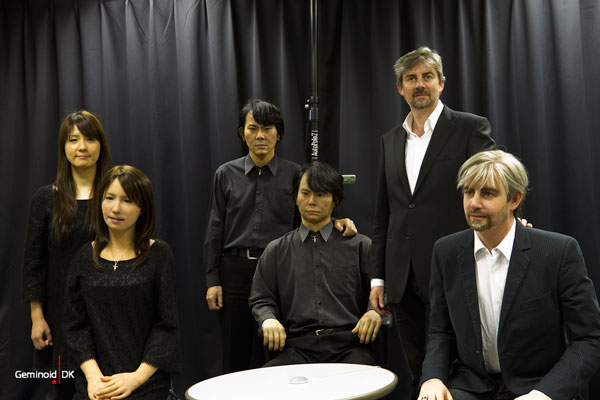
Discussion
The line-up of guests includes
 Stelarc – Described as a “legend and the most celebrated artist in the world working within technology and the visual arts” Stelarc is currently the Distinguished Professor and Research Fellow at the School of Design & Art, Curtin University.
Stelarc – Described as a “legend and the most celebrated artist in the world working within technology and the visual arts” Stelarc is currently the Distinguished Professor and Research Fellow at the School of Design & Art, Curtin University.
Prof. Mary-Anne Williams – Research Professor and Director, Innovation and Enterprise Research Laboratory (The Magic Lab), University of Technology Sydney.
Prof. David Rye – Australian Centre for Field Robotics, University of Sydney and the Creative Robotics Lab, National Institute of Experimental Arts, the University of New South Wales.
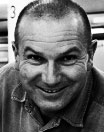 Matthew Connell – Principal Curator Museum of Applied Arts & Sciences. (The Powerhouse Museum)
Matthew Connell – Principal Curator Museum of Applied Arts & Sciences. (The Powerhouse Museum)
 Shara Evans – Futurist, keynote speaker, commentator, strategy advisor and thought leader.
Shara Evans – Futurist, keynote speaker, commentator, strategy advisor and thought leader.
The panel will be moderated by
 Prof. Edward Scheer – Author of “The Infinity Machine” and other books. School of the Arts & Media, University of New South Wales.
Prof. Edward Scheer – Author of “The Infinity Machine” and other books. School of the Arts & Media, University of New South Wales.
with an introduction by Dr. Hank Haeusler.
Program Chair: Dr. Damith Herath
DATE & TIME
Thursday, 16 June 2016 6.00pm for a 6.30pm start
VENUE
Michael Crouch Innovation Centre, UNSW
Ground Floor, Material Science Building, E10
Enter via Gate 2, High St
Kensington, NSW
RSVP
Bookings essential.




An Encounter with the Machine Kind + a Book Launch Event
Stelarc in conversation
A timely look at the future of robotics and the cultural, ethical issues arising from the proliferation of autonomous machines. Renowned performance artist Stelarc will be in conversation with Prof. Graham Durant AM and Dr. Stuart Kohlhagen PSM. Enjoy an hour of stimulating discussion on robotic art in this second edition of the book launch series based on the book “Robots and Art: Exploring an Unlikely Symbiosis”.
Program Chair: Dr. Damith Herath
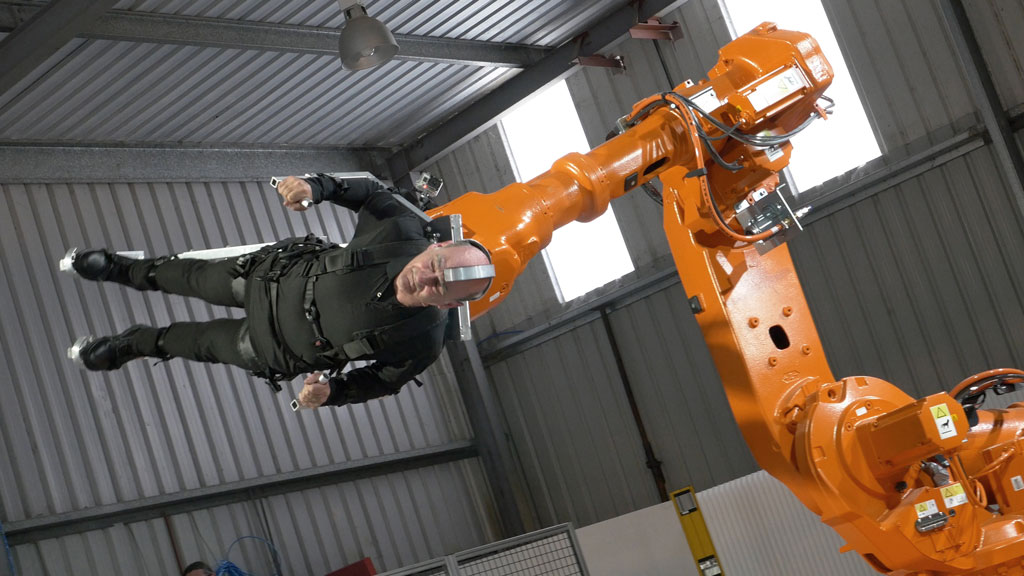
 Stelarc – Described as a “legend and the most celebrated artist in the world working within technology and the visual arts” Stelarc is currently the Professor and Distinguished Research Fellow at the School of Design & Art, Curtin University.
Stelarc – Described as a “legend and the most celebrated artist in the world working within technology and the visual arts” Stelarc is currently the Professor and Distinguished Research Fellow at the School of Design & Art, Curtin University.
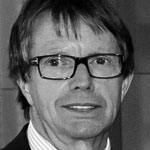 Professor Graham Durant AM – Graham was appointed Director of Questacon in 2003. He is a highly experienced museum and science centre leader with a distinguished academic background and international reputation. Graham helped develop the Inspiring Australia strategy and is an Honorary Professor at the Australian National University. He was awarded an AM in 2012.
Professor Graham Durant AM – Graham was appointed Director of Questacon in 2003. He is a highly experienced museum and science centre leader with a distinguished academic background and international reputation. Graham helped develop the Inspiring Australia strategy and is an Honorary Professor at the Australian National University. He was awarded an AM in 2012.
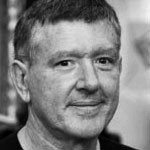 Dr Stuart Kohlhagen PSM – Stuart has worked with Questacon for the past 33 years, during which time he has lead the design and development of interactive exhibits on a wide range of topics. In 2000 he was awarded the Public Service Medal for his contribution to informal science education and in 2013 won the ‘Iron Science Teacher’ competition at the renowned Exploratorium Teachers Institute. He is currently President of the Australian Science and Technology Exhibitors Network (ASTEN).
Dr Stuart Kohlhagen PSM – Stuart has worked with Questacon for the past 33 years, during which time he has lead the design and development of interactive exhibits on a wide range of topics. In 2000 he was awarded the Public Service Medal for his contribution to informal science education and in 2013 won the ‘Iron Science Teacher’ competition at the renowned Exploratorium Teachers Institute. He is currently President of the Australian Science and Technology Exhibitors Network (ASTEN).
DATE & TIME
Friday, 17 June 2016 6.00pm for a 6.30pm start
VENUE
Questacon – the National Science and Technology Centre
King Edward Terrace
Parkes ACT 2600
RSVP
Bookings essential.



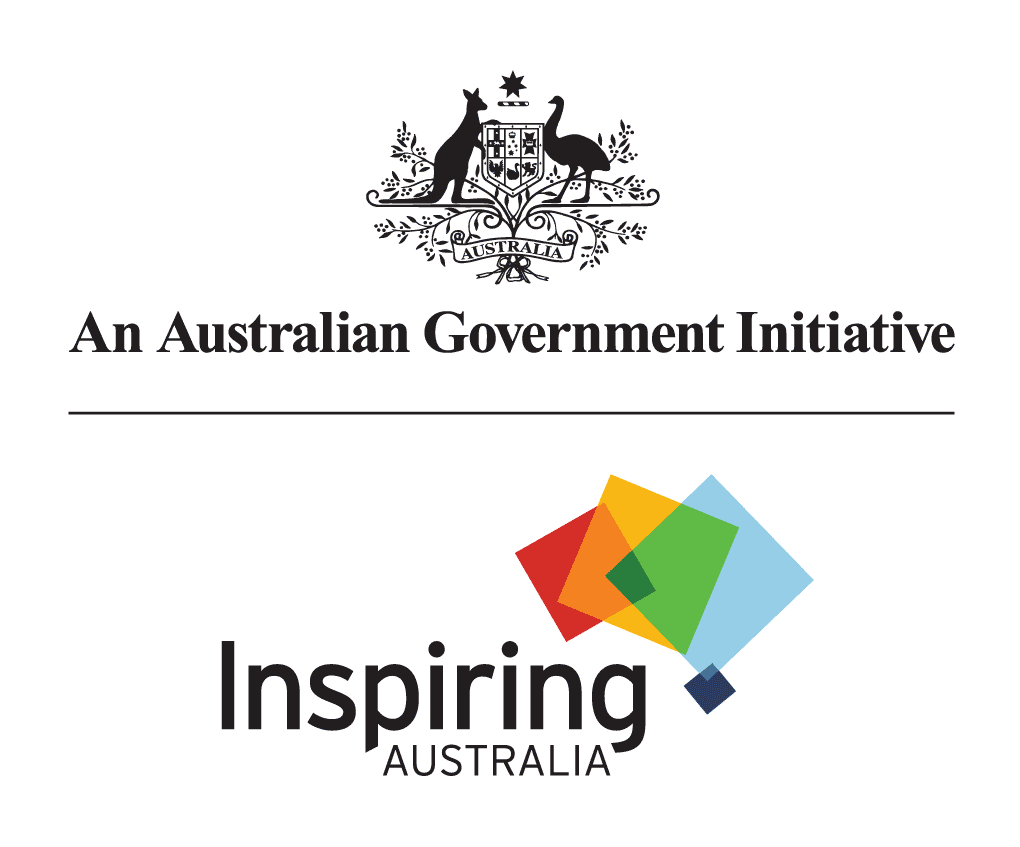
High tech, low art?*
Discussion
Artists, working together with engineers and scientists, have often raised questions about future directions of technology and confronted the public with practical, social and ethical consequences before new technologies reached general adoption. Robots and robotic art are a special case of this. But the relationships between the disciplines have not always been amicable. Artists, scientists, engineers and designers working across ‘the divide’ often find themselves having to defend their cross discipline ventures.
Program Chair: Dr Christian Kroos
Is there indeed a rift? Is technology that is designed to interact with humans in everyday life particularly vulnerable to one sided views? Can art, design, science and engineering be friends?.
Panel:
David Frohlich, School of Arts, University of Surrey
Damith Herath, University of Canberra, Australia
Christian Kroos, CVSSP, University of Surrey
Kirk Woolford, School of Arts, University of Surrey
* Performance artist Stelarc reported being confronted with this dictum in his early career.
DATE & TIME
Wednesday, 6th July 2016, 11:00 am
VENUE
Surrey Space Centre, 13/15 BA 01
University of Surrey
Guildford, GU2 7XH
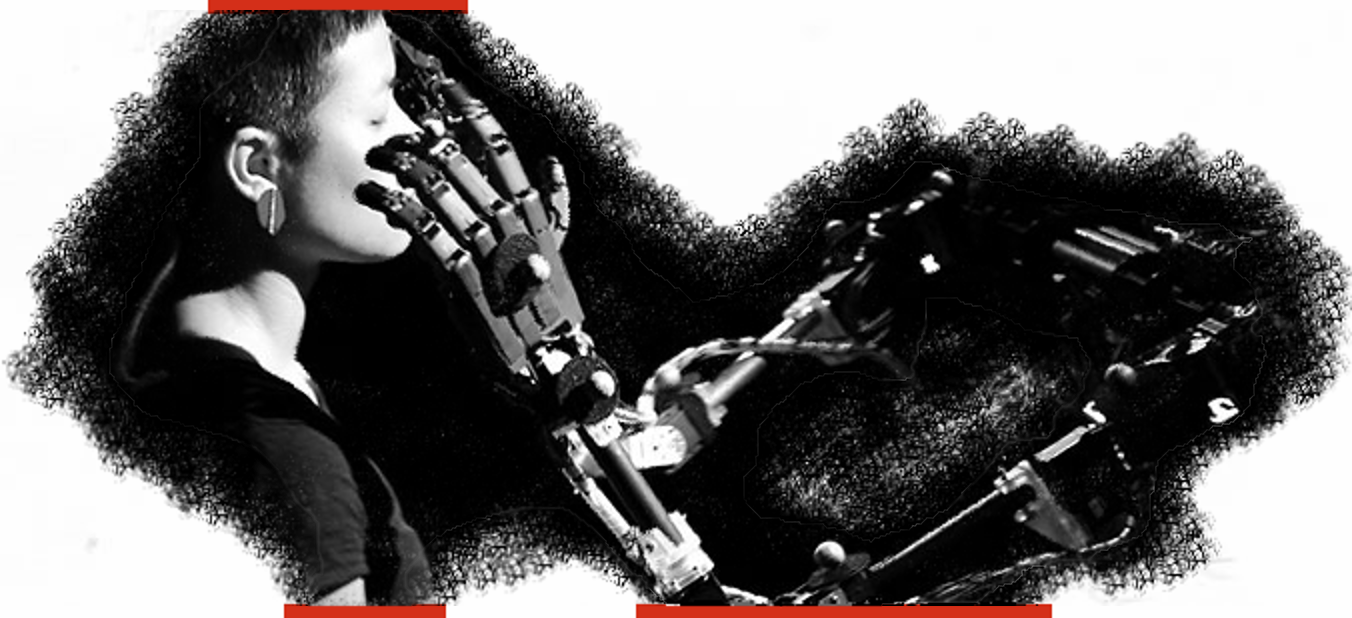


ROBOTS AND ART: EXPLORING AN UNLIKELY SYMBIOSIS
A Perth Science Festival Event
Stelarc is one of the world’s most prolific creators of robotic art and you have the chance to meet him in person as we launch his new book: Robots and Art (co-edited by Damith Herath, Christian Kroos and Stelarc). Journey into a world of the strange, the beautiful and the daring with Stelarc and an expert panel of speakers as they discuss the significance of robots integrating into human society with PICA Acting Curator Andrew Varano.
Panel:
Stelarc, Artist

DATE & TIME
Saturday 13 August, 2016 4pm – 5pm
VENUE
Perth Institute of Contemporary Art
PICA Reading Room
51 James Street Northbridge Perth, WA, 6003

